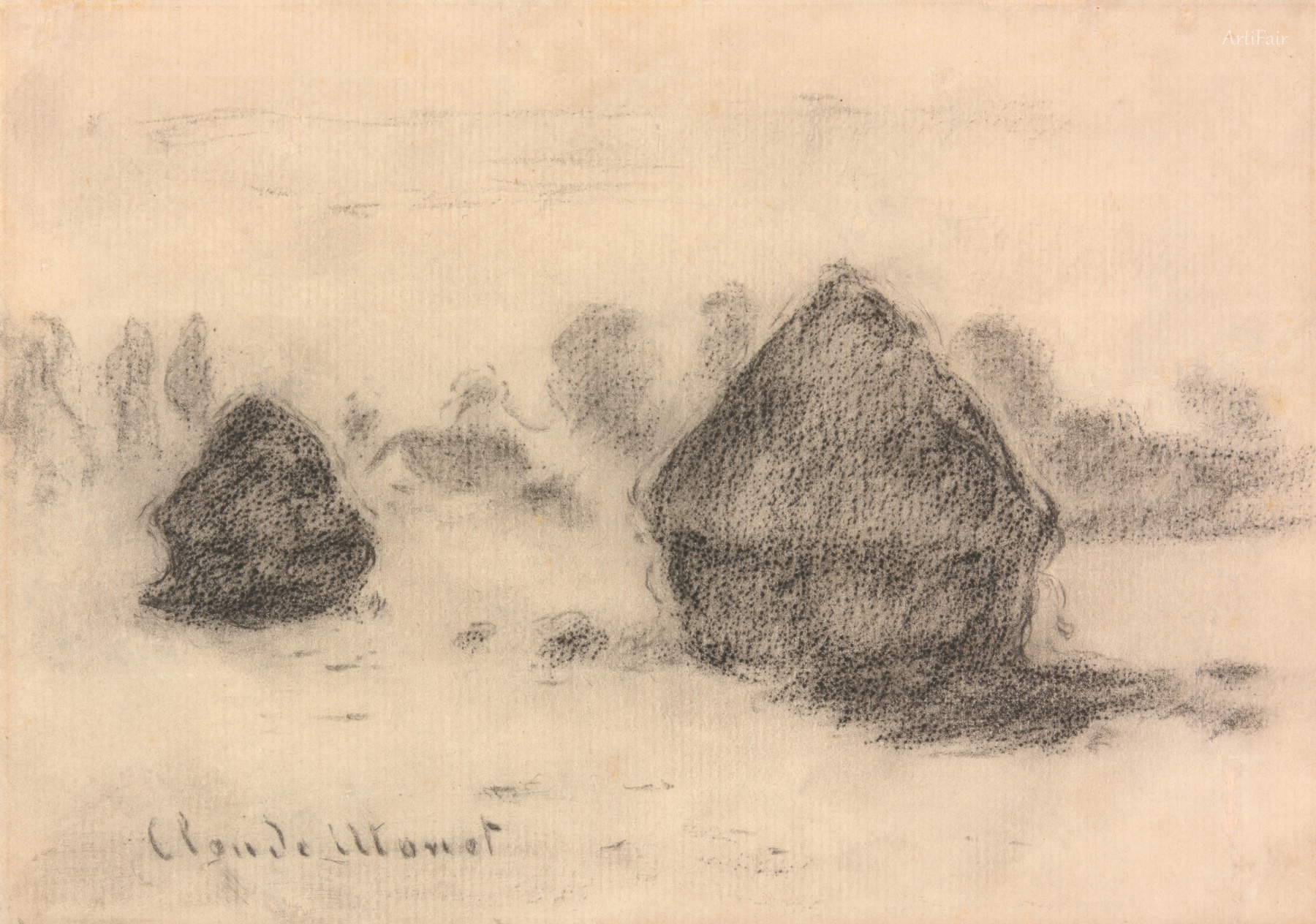
Art Appreciation
In this evocative scene, the viewer is drawn to a tranquil countryside, where softly rounded stacks of wheat stand sentinel against a muted, almost dreamlike backdrop. The delicate, charcoal rendering gives the piece a ghostly quality; the outlines of the stacks are gently blurred, as if they are emerging from or receding into the fog. The subtle variations in shading evoke a sense of depth, pulling the viewer into the fields portrayed, while the overall limited color palette of grays and soft whites amplifies the harmonious atmosphere—a calming breath between the vibrant moments of life. This fusion of light and shadow not only showcases Monet’s mastery of texture but also conveys the serene beauty of rural life, imparting a sense of nostalgia that resonates deeply within the viewer.
As the viewer gazes longer, one can almost hear the gentle rustle of leaves as the soft breeze touches the landscape. The piece speaks to a time before the rush of modernity; it encapsulates a transient moment where nature reigns supreme. Painted during the late 19th century, this work reflects the Impressionist movement’s shift toward capturing ephemeral experiences. Monet's focus on rural simplicity invites contemplation, making this artwork not just a visual feast, but an emotional refuge. By celebrating the mundane moments of life, he transforms ordinary stacks of wheat into enduring symbols of peace and familiarity, allowing us to pause and appreciate the world in its purest form.